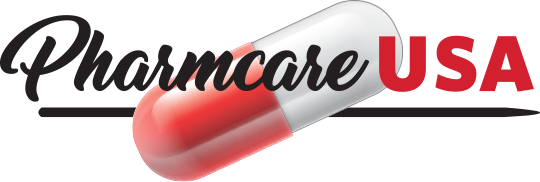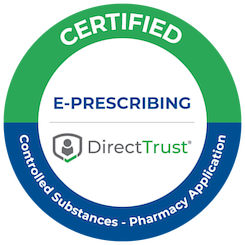Unlocking the Benefits of Long-term Care Pharmacy Software for Nursing Homes
Long-term care pharmacy software can provide a range of benefits for nursing homes, including improved medication management, increased efficiency and accuracy, and enhanced safety for residents.
One of the main benefits of long-term care pharmacy software is the ability to manage medications more effectively. This type of software can help streamline the process of ordering, storing, and administering medications, which can be complex in a nursing home setting. It can also help reduce the risk of errors, such as prescribing the wrong medication or administering the wrong dosage, which can have serious consequences for residents.
Benefits of long-term care pharmacy software
As the healthcare industry continues to evolve, nursing homes are increasingly turning to long-term care pharmacy software to improve the efficiency of their operations. This software can be used to manage medication ordering, inventory, and billing, while providing detailed analysis of patient data. By implementing long-term care pharmacy software, nursing homes can reduce costs, ensure safety and accuracy, and improve patient outcomes. With the right software, nursing homes can drive significant improvements in their operations and create a better experience for staff and patients. By unlocking the benefits of long-term care pharmacy software, nursing homes can improve their operations and ensure the best possible outcomes for their patients.
– Long-term care pharmacy software improves operational efficiency.
– Long-term care pharmacy software ensures safety and accuracy.
– Long-term care pharmacy software drives better outcomes for patients.
Components of long-term care pharmacy software
Long-term care pharmacy software can be implemented in a number of different ways and with varied components. To maximize the benefits of the software and deliver real value to nursing home operations, providers should carefully select their software provider. The key components of long-term care pharmacy software are as follows:
– Drug inventory management – The software should be able to manage drug inventories, including barcode scanning and manual entering of medication orders.
– Medication ordering and management – The software should manage medication ordering and include prescription verification, drug-drug interactions, and adverse event reporting.
– Patient data analysis – The software should include data analysis, such as medication adherence, length of stay, and patient satisfaction.
Analyzing patient data with long-term care pharmacy software
Long-term care pharmacy software can deliver significant benefits by analyzing patient data. Pharmcare USA’s medication regimen review software platforms (MRR) include data analysis modules specifically designed to optimize outcomes for nursing home patients. These modules allow nursing home staff to review key metrics, including medication adherence, length of stay, and patient satisfaction, and then identify areas for improvement. This platform also provides a centralized platform where staff can view key metrics and analyze data in real time. The platform also allows for the creation of reports that can be used to track metrics over time. Nursing homes can identify trends and improve the overall experience for patients. For example, medication adherence is a key metric that directly impacts patient outcomes. By analyzing data and discovering which medications are not being taken as prescribed, nursing homes can identify areas for improvement and work to address non-compliance issues.
Improving patient outcomes with long-term care pharmacy software
Long-term care pharmacy software can increase patient outcomes in a number of ways, including lowering the length of stay and reducing readmission rates. These benefits are attainable through the use of automated reminders and medication management. Automated reminders can be used to remind staff to administer medications, while medication management can help to identify potential issues. For example, staff can be alerted if a patient has been prescribed overlapping medications or has not been taking their medication as prescribed. Long-term care pharmacy software can also be used to identify potential interactions and adverse events, helping to ensure patient safety and reduce the risk of adverse events. When implemented correctly, long-term care pharmacy software can drive significant improvements in patient outcomes, including reduced length of stay and reduced readmission rates. When used appropriately, long-term care pharmacy software can help nursing homes to reduce the cost of care, increase the overall safety of care, and improve the experience for staff and patients.
Cost savings with long-term care pharmacy software
Long-term care pharmacy software can also drive significant cost savings for nursing homes. By implementing an automated system, providers can significantly reduce the amount of time dedicated to medication distribution and management. In fact, medication distribution and management often consumes 15% of the nursing staff’s time, leaving less time for direct patient care. Through the use of long-term care pharmacy software, providers can reduce the time dedicated to medication distribution and management by 50%. This allows staff to focus on patient care, while also creating more time for direct care and reducing overtime. When used correctly, long-term care pharmacy software can also help nursing homes to improve accuracy and reduce the number of errors made during the medication process. By implementing the software, providers can reduce the number of errors made by up to 50%, saving significant time and money. Overall, long-term care pharmacy software can drive significant cost savings for nursing homes and create a better experience for staff and patients.
Ensuring safety and accuracy with long-term care pharmacy software
Long-term care pharmacy software can also improve the accuracy of nursing home operations and ensure the highest level of safety. By managing medication distribution and tracking inventory, providers can reduce human error and improve accuracy, ensuring that medications are distributed correctly and are dispensed as intended. The software can also be used to verify and check the appropriateness of prescriptions, ensuring that staff are following best practices and that prescriptions are accurate. When implemented correctly, long-term care pharmacy software can significantly improve the accuracy of operations and ensure the highest level of safety. This is a significant benefit for nursing homes, as inaccuracy in medication distribution can lead to adverse events. Inaccurate medication distribution can lead to errors, including dosing errors, drug-interaction errors, and errors due to drug allergies. By implementing long-term care pharmacy software, providers can significantly reduce the risk of errors and ensure the safety of patients. In addition to improved medication management and increased efficiency, long-term care pharmacy software can also enhance the safety of residents. For example, it can help to ensure that medications are stored and administered correctly, and it can provide alerts if there are any potential drug interactions or contraindications. This can help to prevent adverse drug events, which can be serious and even life-threatening for residents.
Implementing long-term care pharmacy software
By now, it’s clear that long-term care pharmacy software can deliver significant benefits to nursing homes. However, providers must select the right software for their operation, as well as implement and integrate the software correctly, in order to maximize the benefits of the software. When implementing long-term care pharmacy software, providers should consider a number of different factors, including customization, support, and scalability. These factors will help providers to select the right software and create a better experience for staff and patients. When implementing long-term care pharmacy software, providers should consider the following factors:
– Customization – The software should be highly customizable, allowing providers to mold it to their specific needs.
– Support – The software should include 24/7 support, allowing providers to receive assistance when needed and receive timely responses.
– Scalability – The software should be scalable, allowing providers to easily upgrade and expand as needed.
Overall, long-term care pharmacy software can provide a range of benefits for nursing homes, including improved medication management, increased efficiency and accuracy, and enhanced safety for residents. By implementing this type of software, nursing homes can help to ensure that their residents receive the best possible care.
Pharmcare USA’s software solutions can provide all of these aspects and more.




